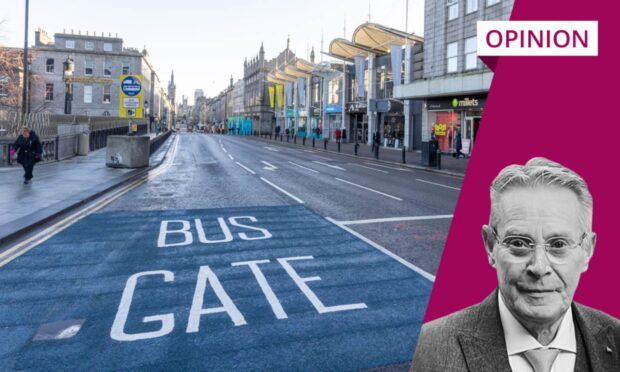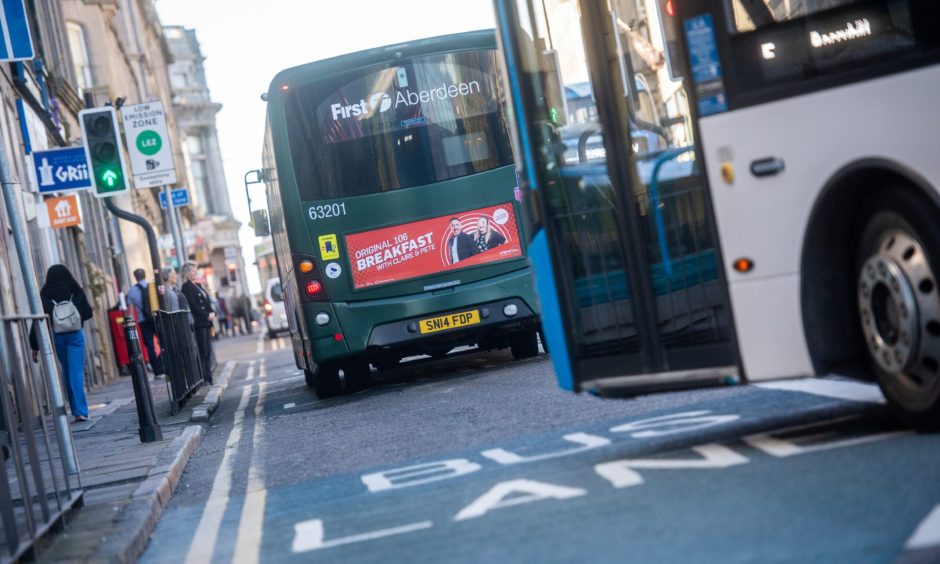You might assume my view of life back home was slightly skewed under a sun brolly beside a pool in the Canaries.
But in the haze a conundrum materialised similar to Aberdeen Council’s unedifying tussle over secret legal advice about its much-reviled bus gates.
I was grateful we had a brolly at all, to be honest.
“Brolly Wars” had broken out in our holiday complex, you see.
A shortage meant humanity’s fragile thin veneer of decency towards neighbours peeled away again.
Sweaty red tourists burning in the sun were desperate for them; as if they were dying of thirst.
So some took the law into their own hands and stole brollies from each other.
I blinked hard as a man and woman were literally having a tug-of-war over one across the other side of the pool; people shouted at them to stop.
Suddenly a new tactic emerged: a belligerent loomed over us, but didn’t demand that we give up our brolly – he tried to seize the shade under it instead.
Yes, the very shade on the ground.
He pronounced that we had too much shade, so he was going to plant one of his tribe in our space.
We didn’t take too kindly to him throwing his weight around like a bully, so he slunk away.
But it made me think, “Who owns the shade?”
Lawyers would have a field day – and make buckets of cash – thrashing this out.
In Aberdeen shade wasn’t the issue, but councillors kept in the dark – over crucial bus-gate legal advice given to the powers that be who implemented them.
Lawyers don’t like their advice shown to all
Who owns legal advice in the public sector – the people or those who wish to keep it private?
I think I know why lawyers – and lawmakers such as public officials – don’t like their legal advice being shown to all and sundry.
It’s because there is every chance it would be ripped to shreds by other lawyers, and any number of interested parties.
That’s the wonderful thing about our legal system: it’s always open to challenges and new interpretations of how existing laws were applied.
Political embarrassment and inevitable public outrage often appear to be the main driving forces for keeping this type of thing under wraps.
Yes, I know there can be justifiable reasons for not disclosing legal advice over how public cash is spent on the grounds of potential commercial sensitivities.
Even I – someone who wants everything out in the open in the public interest – would accept some things that have to be kept private.
My concern is with the kind of stuff nailed down under the carpet for dubious political motives.
I’m not for a minute suggesting that anything like this has gone on with the legal advice swirling around Aberdeen’s miserable bus gates, whose implementation has enraged businesses and disrupted the motoring public no end.
But a furious dogfight spilled out in Aberdeen council chamber over how much legal advice over the gates councillors were allowed to see by public officials.
It highlighted a fine line about how our councils are run; whether it’s councillors elected by the public who are in charge – or anonymous highly paid officials who operate in the background (or maybe I should say the shade).
Aberdeen bus gates should be challenged in court
You’d assume that crucial advice over a cataclysmic issue of such intense public interest would be made public in every detail.
The bus-gate fiasco in Aberdeen has now reached a point where there seems to be a fundamentally valid question about whether it is time for the original decision to implement the gates to be tested in the courts.
I have written previously about the striking similarities between the two issues in Aberdeen and Inverness.
Both are underscored by the same basic theme.
That lack of thorough public consultation in advance on each traffic scheme was a fatal flaw in the process in both places.
It appeared to be practically non-existent in Aberdeen, but councillors just waved it through despite some voicing dissent.
Therefore it would seem sensible to include the legal advice and lack of public consultation as part of any case if it ever reached the courts.
Exposing legal advice in all its detail to a judge would also decide whether vague experimental traffic orders used to foist the gates on the public were an appropriate use of the law.
And at the same time lay bare the curious financial deal the council entered into with the Scottish Government which allegedly left councillors manacled to the gates with no chance of escape; I don’t recall any public consultation about that either.
It’s time to test the gates in court.
David Knight is the long-serving former deputy editor of The Press and Journal


Conversation